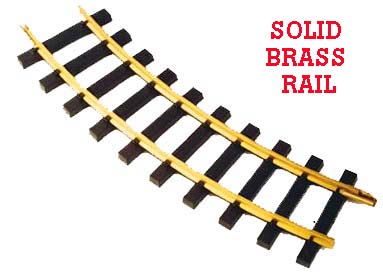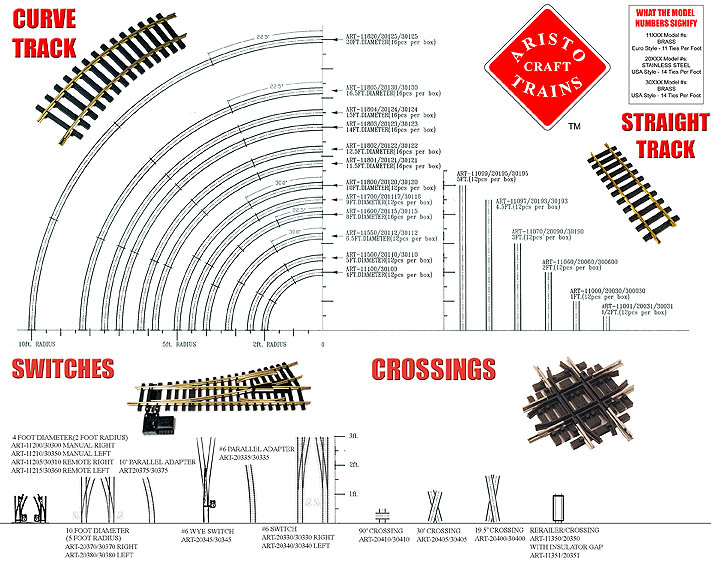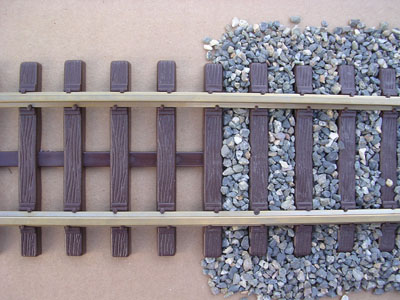Track & Bridges
Track Prices: A Different Perspective
Jul 25, 2007


By Ray Turner |
Author
Bio
Track price is THE big topic of discussion since Aristo-Craft and USA Trains announced the dramatic increase of their Brass and Stainless Steel Track.
|
Track price is THE big topic of discussion since Aristo-Craft announced a doubling of their Brass and Stainless Steel track prices June 18th. Plus, USA Trains has raised there prices as well. Some garden railroaders say they have to put off planned track expansion. Some say track price will keep newcomers out of the hobby. Someone calculated the value of copper actually in a foot of track (not that much, he said). 
My perspective may be a little different. I have a large garden railroad already and donít foresee a significant expansion in the near future. However, I use Aristo-Craft Brass track in a product we make. The track price is a large factor in total cost, so it directly affects our sale price, the number we can sell, and our profit (Itís hotdogs for dinner tonight, kids). So, since I was going anyway, I decided to investigate track pricing at the National Garden Railway Convention. I think the results could be useful to LSOL members. Caveat: track pricing is very dynamic right now, but this comparison can serve as a guide for those considering a major expansion or a new railroad. Since the price of Brass track has increased so much, I thought it would be useful to look at the price of Aluminum track as well as Brass. And I included Nickel Silver too where that is available. I converted all the track options to price per foot. With rail and ties sold separately, I calculated a price per foot for track, i.e. ties plus two rails. What I'll give here are list prices for a fair comparison. Also, given that LGB is under a bankruptcy cloud and track production is stopped, and what future price it might be made at is uncertain, I don't include them.
 For code 332 (which is the most widely used, and means that the rail is .332" high), Brass track from Aristo-Craft is now about $8/ft. and USA Trains track is about $5/ft. (depending on which pieces you buy) Other than the difference in tie appearance and the coloration of the rails as they age, you should have no trouble mixing these tracks together or with LGB. Sunset makes code 250 Brass track for about $4.25/ft. If you want to stay with Brass but need a lot of track, you could consider changing to code 250 to save a little. Split Jaw and Hillman both make code 250/332 adapter clamps. Stainless steel track is still more expensive than Brass. Track Prices Chart Page (PDF 11k) As you can see in the chart, several manufacturers make code 250 Aluminum track. Very roughly speaking, it is about 1/3rd the price of code 332 Brass track. California and Oregon Coast Railway (COCR) has 6' Aluminum flex track for about $2.55/ft. I have ordered some to experiment with and will know in a couple of months how well it works and will give you a report at that time. But I can say that on my first garden railroad I used Aluminum track and mixed it with Brass LGB switches and had no trouble with the "mix". Aluminum is not nearly as strong - you can't walk on it. But it is much easier to bend. You also can't solder to Aluminum (very easily). If you're using battery power or rail clamps, this won't matter to you. 
I think moving to Aluminum track is a big step and you should think about all the plusses and minus and maybe try a little before jumping in with both feet. But the price of Brass track has a lot of folks saying they can't consider the expansion they were planning and that it may keep some newcomers out of the hobby. And that would be a shame. Top of Page
|



